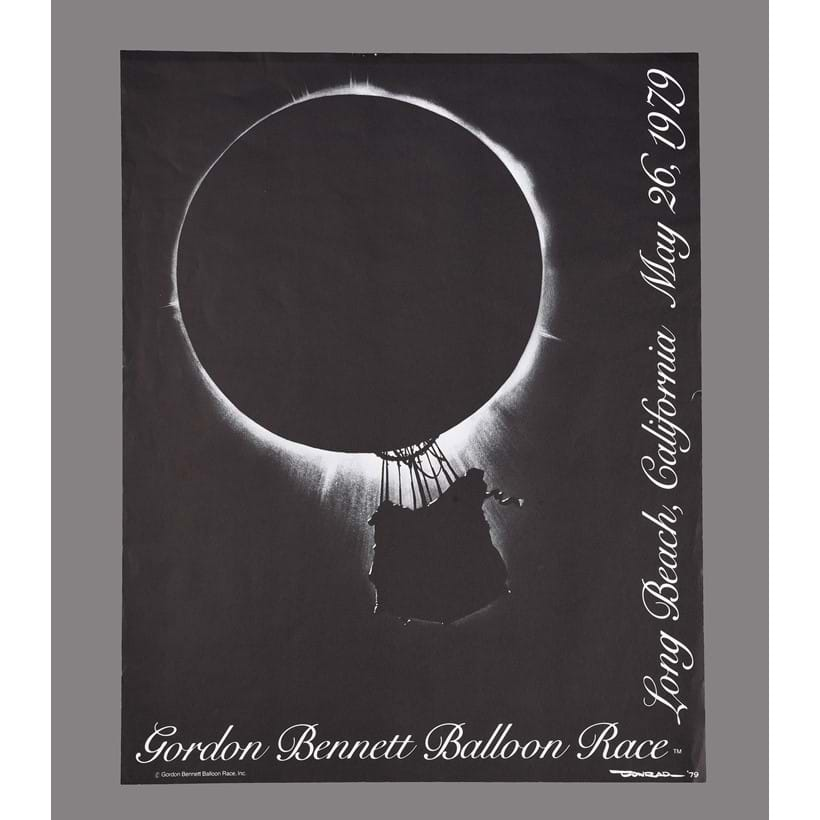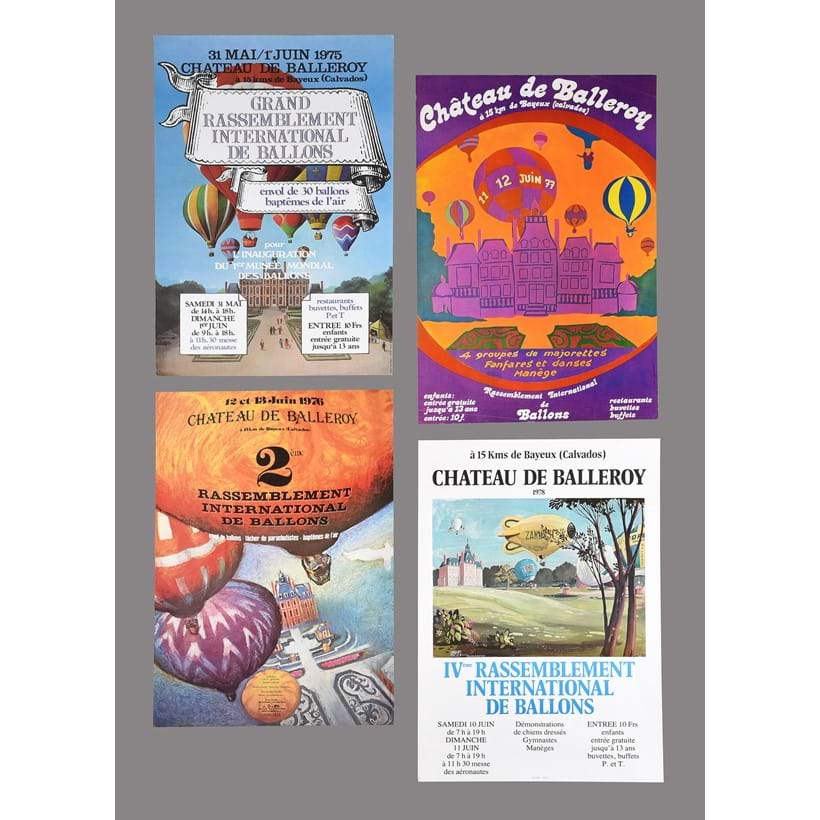Up, Up and Away | A private collection of ballooning and other posters and prints | The Transport Sale
In our Transport Sale on 21 September, we are delighted to offer a selection of original travel artwork and posters from the estate of the late Royston Cooper, a well-known travel poster artist and the illustrator of the ‘Keep Britain Tidy’ campaigns of the second half of the 20th century. Here, Dreweatts specialist, Martyn Pring takes a brief look at the changes occurring in travel art during the period and some of the trends that make the acquisition of original transport and travel art so appealing for collectors. He also picks out some of the pieces that caught his eye in the auction.
Royston Cooper
Royston Cooper was part of a post-war London set of illustrators that changed the face of British travel, tourism, and destination poster work until its dominance as a main advertising medium waned in the 1970s. Prior to this, the Big Four, and before them the largest of the independent pre-grouping railway companies, held an inordinate sway on the way travel was portrayed. The LMS, for instance, could always rely on a bevy of leading Royal Academy artists, to illustrate the way the company wished to be portrayed. By the end of the 1930s railway companies, along with car makers, fuel suppliers such as BP and Shell, embryonic airlines, the biggest resorts - Blackpool, Bournemouth, Brighton and Torquay, and travel agents such Thomas Cook were all using the nation’s artistic talents to maximise business and influence holiday and travel plans.
With the establishment of the British Railways organisation in 1948, the notion of modernisation and the gradual move away from steam traction, was visibly noticeable in marketing literature. With this trend away from images of traditional resort grand vistas, named trains and locomotives that had punctuated railway art for so many years, came new and refreshing styles and approaches. Some of Royston Cooper’s earliest work such as his work for London reflected this approach. He was in the vanguard of a movement producing modern and ground-breaking work utilising colour photography as part of the image creation process.

A move to more quirky resort advertising styles came with the Swinging Sixties. Royston’s 1960 Hastings poster certainly captures changes taking place, which in some ways, demonstrated the future of the British holiday, where transport operators such as British Rail and the leading coach companies, tired and old-fashioned resorts all had to compete with the new package travel industry concentrated in the hands of a few powerful industry players.
It did though mark an age of dazzling consumerism, a period of rapid social change with the almost guaranteed allure of sunshine on a continental holiday break. Britons in a short time became a mass marketing commodification as summer sojourns transferred from Blackpool, the Butlins holiday camp, the east coast destinations, and the West Country, to sunny Iberia and the allure of cheap all-inclusive Spanish poolside holidays.
With these changes people at the forefront of commercial art had to adapt to fresh advertising and promotional forms, best extolled by new broadsheet colour supplements and publishing houses with a multitude of different personal titles, supporting the trappings of a more affluent society where everyone in a new golden age of prosperity, appeared to have access to a car, television and wore the latest in fashion accessories. Outmoded travel posters, as indeed did much TV and radio output of the time, seemed somewhat archaic when confronted with a challenging holiday industry. The start of ITVs 'Wish You Were Here…?' travel series summoned fresh imaginative approaches to accompany the package holiday.

Yet all these original posters and examples of marketing literature are immensely popular with collectors today; almost certainly brought on by the incredible digitisation and documentation of late-Victorian and 20th century life, and now all very familiar territory. Poster artists and illustrators like Cooper played their part in this tremendous creative tide. Aside his artistic, designer and typographer work side, we catch a glimpse of his other passion - gas balloon piloting and participating in hot air balloon races across the UK, Europe, and the Gordon Bennett events in the United States. His own balloon was known as Sunny Money G-BDBI. Hardly surprising, he should acquire his own collection of ballooning artwork.

Hot air ballooning has been with us for some time ever since the Montgolfier brothers built the first manned balloon constructed from paper and silk in November 1783. Imagery of the first assent of the hot air balloon with its circular platform at the base of the balloon is a perfect period time capsule. The creative reinterpretation of the flight is shown in this September 1976 poster (Lot 171) highlighting an exhibition event organised by the village of St. Niklaas in Belgium.

Interestingly, the maiden flight of the first gas balloon - hydrogen and a lighter than air gas - was just ten days later on 1 December 1783. Gas balloons, although not everyday sights in Britain, western Europe, and America, became the most efficient form of air travel until the arrival of the powered fixed-wing aircraft in 1903. However, the combination of gas balloon and piston engine technology fuelled a rapid rise of commercial and military airships in the first thirty years or so of the 20th century, until well-publicised transatlantic airship disasters rendered them obsolete within a short period of time.
Hot air ballooning, although more cumbersome with no reliable heat source, did attract followers particularly amongst the well-heeled as it was an expensive past time. Likewise, gas balloon racing and the inauguration the Gordon Bennett Cup in 1906 have become signature events. By the 1960s with the advent of the propane gas burner turned hot air ballooning into a real and competitive sport leading to the formation of Balloon Federation of America in the US and other similar type organisations in Europe.
Themed around images of hot air ballooning, American songwriter Jimmy Webb wrote the lyrical soul-pop record 'Up, Up and Away' in 1967. Recorded by 5th Dimension it was a big hit on both sides of the Atlantic becoming one of those songs so indelibly imprinted on the decade. Robust wicker baskets attached to the base of colourful balloons became common-place sights in the skies. Today such festival events such as the Bristol International Balloon Fiesta are key dates in many destinations’ tourism calendars.

AUCTION DETAILS
Tuesday 21 September | 10.30am BST
Donnington Priory, Newbury, Berkshire RG14 2JE
Browse the auction
View page turning catalogue
VIEWING:
Viewing at Donnington Priory:
- Sunday 19 September: 10am-2pm
- Monday 20 September: 10am-5pm
- Day of sale: from 8.30am
Visitors are encouraged to wear a face covering while in the building, use the hand sanitiser provided on entering and observe social distancing rules. We may need to restrict the numbers of visitors viewing at one time, so if you would prefer to book an appointment in advance, please contact us. To book an appointment to view, please email: transport@dreweatts.com or call 44 (0) 1635 553 553.
Our specialists will be providing detailed conditions reports and additional images as requested. Many of the lots already have condition reports so please check the website first (see text in italics at the end of the description). If you cannot see a condition report on the website, please click the “Ask a question” button to request one.















